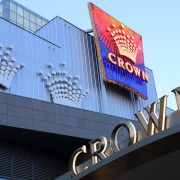WHAT’S WRONG WITH EMPLOYEE ENGAGEMENT SURVEYS
Employee engagement is key to any hospitality business, but it is also an area where many clubs, pubs and casinos struggle. Better engagement means better productivity for your business, and it means employees are more positive, better communicators and even more creative and they are far less likely to quit their jobs because they have higher job satisfaction.
This recent study by Sudhir H. Kalé, Ph.D. specifically addresses gaming venues. Kale is senior advisor with Bullseye CX and has worked with clients like Sands China, Mohegan Sun, Crown Casino and Marina Bay Sands.
……………………………………………………..
As more and more gaming businesses realise the strong indelible link between employee engagement and customer satisfaction, they are paying increasing attention to the concept of employee engagement. Regular surveys of employees are undertaken to assess employees’ level of engagement with the job, and some organizations are also carrying out short “pulse” research to assess engagement. Good intentioned as the Voice of Employee initiatives are, they often yield erroneous findings that provide little value in exchange for all the expense and time that management devotes to understanding engagement.
The reason for poor returns can be attributed to three causes:
(1) Lack of understanding of the employee engagement concept;
(2) Poor operationalisation of employee engagement in surveys; and
(3) Low reliability and validity of the research instruments.
The Concept of Employee Engagement
Very often surveys are carried out with management having less than a solid understanding of what employee engagement actually means. The reason for nebulous understanding of the engagement construct is that the meaning of employee engagement is ambiguous among both academic researchers and among practitioners who use it in conversations with clients. Several organizations equate employee engagement with employee satisfaction or with an employee’s tenure with the organization. While employee satisfaction and intent to stay with an organization are often the results of engagement, they do not equate with engagement.
The academic research often views employee engagement as a positive, fulfilling, work-related state of mind that is characterized by vigour, dedication, and absorption. The Gallup Organization defines engaged employees as “those who are involved in, enthusiastic about, and committed to their work and workplace.” There exists a fair degree of consensus among academic researchers as well as practitioners that engaged employees exercise more “discretionary effort” in performing their jobs. Using variants of each of these definitions, CustomInsight LLC provides the following composite definition, “Employee engagement is the extent to which employees feel passionate about their jobs, are committed to the organization, and put discretionary effort into their work.”
As practitioners within the gaming industry, before you invest any time in measuring customer engagement, ask yourself specifically whether you want to invest in assessing employees’ vigour, dedication, commitment, and discretionary effort, and if so, what do you intend to accomplish once the measurement has been undertaken.
Poor Operationalisation
Bad choice of questions is the second problem associated with employee engagement surveys.
Very often, questions within the survey assess employee satisfaction or happiness, not engagement. The link between employee happiness and productivity is not as strong as that between engagement and productivity or profitability. Also, many questions assess what I call the antecedents of engagement, not engagement itself. For example, the Gallup Organization uses “having a friend at work” as a precursor of engagement. Do all employees feel more engagement if they have a friend at work? More importantly, what can an organization do to ensure that every employee has a friend at work? Precious little, in my opinion.
It is perfectly okay to measure the antecedents of engagement so long as you are extremely confident of the strong causal relationship between the antecedents and engagement, and where the variables leading to engagement are within the control of the organization.
Reliability and Validity
The third major issue with regard to employee engagement surveys concerns the reliability and validity of the survey instrument. Reliability, simply defined, is the degree to which the result of a measurement can be depended on to be accurate. Imagine your doctor making decisions regarding diagnosis of your sickness based on defective or flawed thermometers and glucometers. Yet, management typically makes strategic decisions regarding employees based on unreliable survey instruments. Even worse, external consultants rarely, if ever, provide reliability figures on the scales and indexes they develop to assess employee engagement.
While reliability assesses the dependability of a survey questionnaire to provide consistent results, validity is an index of whether or not a particular instrument measures what it purports to measure. Just search the Internet for “employee engagement surveys” and you will find scores of surveys, all very different in content and wording, yet supposedly measuring the same concept. Surely, not all these surveys are valid instruments with which to measure employee engagement!!! Going back to the physician example, while reliability tells you about the dependability of thermometer readings, validity concerns itself with whether a glucose tolerance test or a colonoscopy is an advisable diagnostic test for ascertaining diabetes. Unfortunately, management never quizzes outside consultants or in-house research staff on the reliability and validity of the research that is carried out. Decisions with far-reaching consequences are routinely made based on unreliable and invalid research.
Recommendations
Employee engagement provides valuable information on the commitment and effort your employees put into their jobs. Engagement has been shown to relate positively to productivity, customer satisfaction, organizational profitability, and shareholder return. Engaged employees Say (good things about the organization to fellow employees and customers), Stay (with the organization longer compared to employees that are less engaged), and Strive (for better performance and effort). Investing in assessing and furthering employee engagement definitely yields handsome returns.
However, most organisations do a less than effective job of measuring and benchmarking employee engagement. There is scant regard for identifying the right antecedents of engagement, and the reliability and validity of the survey instrument are almost always in question. Decisions made on the basis of flawed employee engagement surveys can be disastrous both for the employees and for the organization. To pre-empt disasters from happening, organizations need to be aware of what exactly they are trying to measure and change, and how reliable and valid the survey and pulse instruments are. Correctly designed and properly administered surveys of employee engagement can alert management to workforce health and productivity issues that would otherwise lie dormant and create a serious competitive disadvantage.

Sudhir H. Kalé, Ph.D., is Senior Advisor with Bullseye CX, a company that provides management and analytics consulting to casinos and clubs. He has decades of experience in designing surveys and carrying out sophisticated customer and employee research. Sudhir has consulted with leading clubs and casino operators all over the world. You can reach him at .












